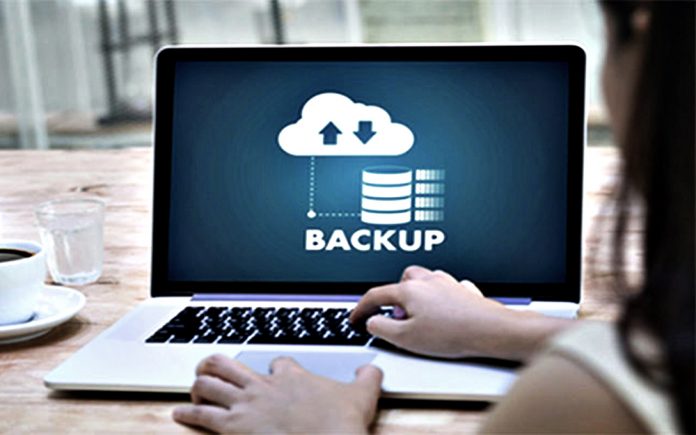
Being Proactive and Disaster Recovery Challenges…
By Dennis Shelly
Over the past couple of years, we have become even more emerged in the digital world, and securing your information is now more important than ever. Our photos, passwords, bank account numbers, contacts, tax receipts, and everything else we can fit, are saved to our phone or computer, and unless this information is backed up, you leave yourself vulnerable to losing everything!
While some instances of data loss are caused by human error most aren’t even the user’s fault. 67% of these instances are caused by hard drive crashes or system failures.
Taking a proactive, multifaceted approach is the only solution to protecting your information. In some cases, files can be recovered after accidentally being deleted but if your hard drive is destroyed there isn’t much you can do to retrieve your data.
What is a Backup?
When ‘the cloud’ had a much simpler meaning, securing information meant putting it in your drawer of important things, or maybe even a safe. Widespread access to computers has created an unfathomable amount of data for every user. Because our lives have migrated online, we have more important information to lose than ever. For most of us, our physical photo collection alone would require renting an entire storage unit.
In the information age, ‘a backup’ means a separate place for your information. That includes a physical place, like an external hard drive, flash drive, or separate computer. The most common place to store your information is on an external server, also known as the cloud.
A proper system backup shouldn’t take no longer than a few minutes for the average user. According to Microsoft, larger files will take longer, 1GB should take around 4-5 minutes. A small sacrifice to protect your information.
Everyone’s method should reflect their workflow. The backup strategy users dedicated to the Apple ecosystem will vary from those who use Android and Windows. It will also depend on how much of their life is digital. For someone who works remotely, their backup strategy is going to differ from someone just looking to secure their contacts and photos in case they drop their phone in the toilet.
One Place Isn’t Enough
Find multiple places to store copies of your most important information that you are comfortable with maneuvering in. Storing your photos in DropBox isn’t going to help you recover after a data disaster if you aren’t consistently uploading to their servers. Make sure you are proficient with uploading, downloading, and moving around files within the storage system’s user interface. A recovery should a painless process if the time ever comes.
We recommend keeping a copy of your important data in at least two places, one physical and one in the cloud. For some users, a flash drive is big enough to store all their important information. For others, the idea is laughable. External hard drives are essentially large versions of flash drives, so don’t be intimidated to use one. They are actually quite affordable as well and you will be thankful to easily recover your files in case your laptop fails to turn on one day.
Don’t rely on one ecosystem. If you have a MacBook, keeping a copy of your hard drive on a Google server will protect you in case a problem arises within Apple. 140,000 hard drives fail each week in the US, if you are only relying on your device and the manufacturers cloud services, you may not be able to retrieve your data, even if it’s backed up.
Automatic Backups
One of the most amazing things about the digital age is their ability to automatically backup all your information. As long as you have enough cloud storage, your phone and computer should be making copies of your data and storing them in the background. The most common mistake people make is not having enough storage. Your iPhone or Android device will not complete the backup if there isn’t room in your storage plan.
Modern operating systems also allow you to choose what you would like backed up. You can customize your settings to only save your photos and contacts if that is all you can fit in a free storage plan. Buying extra storage is annoying but if you’ve ever lost a phone and had to start by from scratch you know the struggle. This may not have been a big deal in the flip phone era, but when you have 50 apps with different passwords and three different credit cards saved to your phone it is a huge inconvenience.
As long as you have the storage space, setting up automatic backups is easy. If you need some technical assistance, follow this guide by Back Blaze, they cover both iPhone and Android automatic backups. To make sure your Mac is automatically backing itself up visit Apple support, for Microsoft click here.
Recovery
When a file is deleted, it doesn’t just disappear from the face of the earth instantly. Both Apple and Windows operating systems send files to a recycle bin after deleting. They are easily obtained by opening the recycle bin and dragging them back to your desktop.
There is still hope even if you deleted files from your recycle bin, but you may need to hire a professional. Metadata is available within the computer’s file system even after a file is deleted. If nothing has been written to the storage unit, you should be able to retrieve the metadata and piece together the files that were deleted.
The best way to retrieve lost data is to download it from a recent hard drive back up. Not exactly what you want to hear after accidentally deleting all your photos. We feel your pain, everyone has deleted something they didn’t mean to. There is still hope retrieving the files, just be sure not to save anything else to your computer or device after you realized you deleted something by mistake.
Be Proactive
When your computer and phone are automatically backing up your data, you most likely won’t run into any issues. However, malware and malfunctions happen. That’s why it is important to store copies of your data in multiple places across ecosystems. If you have automatic backups installed on your laptop and phone, keep a copy of your hard drive on DropBox, Google Drive, One Drive, or Carbonite. Also, it’s a good idea to keep an external hard drive with your important files, losing your data will be nothing more than an inconvenient afternoon.
We understand that your data (photos, documents, and personal information) is precious and irreplaceable. Our Eggsperts who have been performing data backups and data recovery since 2002, provide eggspert consultations and support that’s custom-tailored to you. We are the team can help prevent data loss exposure and offer education and options to keep your data and information safe.
Have a suggestion for our next article or questions about backing up your technology devices? Please contact us by calling (760) 205-0105 or emailing us at tech@eggheadit.com and our Eggsperts are happy to help you with your questions or suggestions.
IT | Networks | Security | Phones | A/V | Integration










































